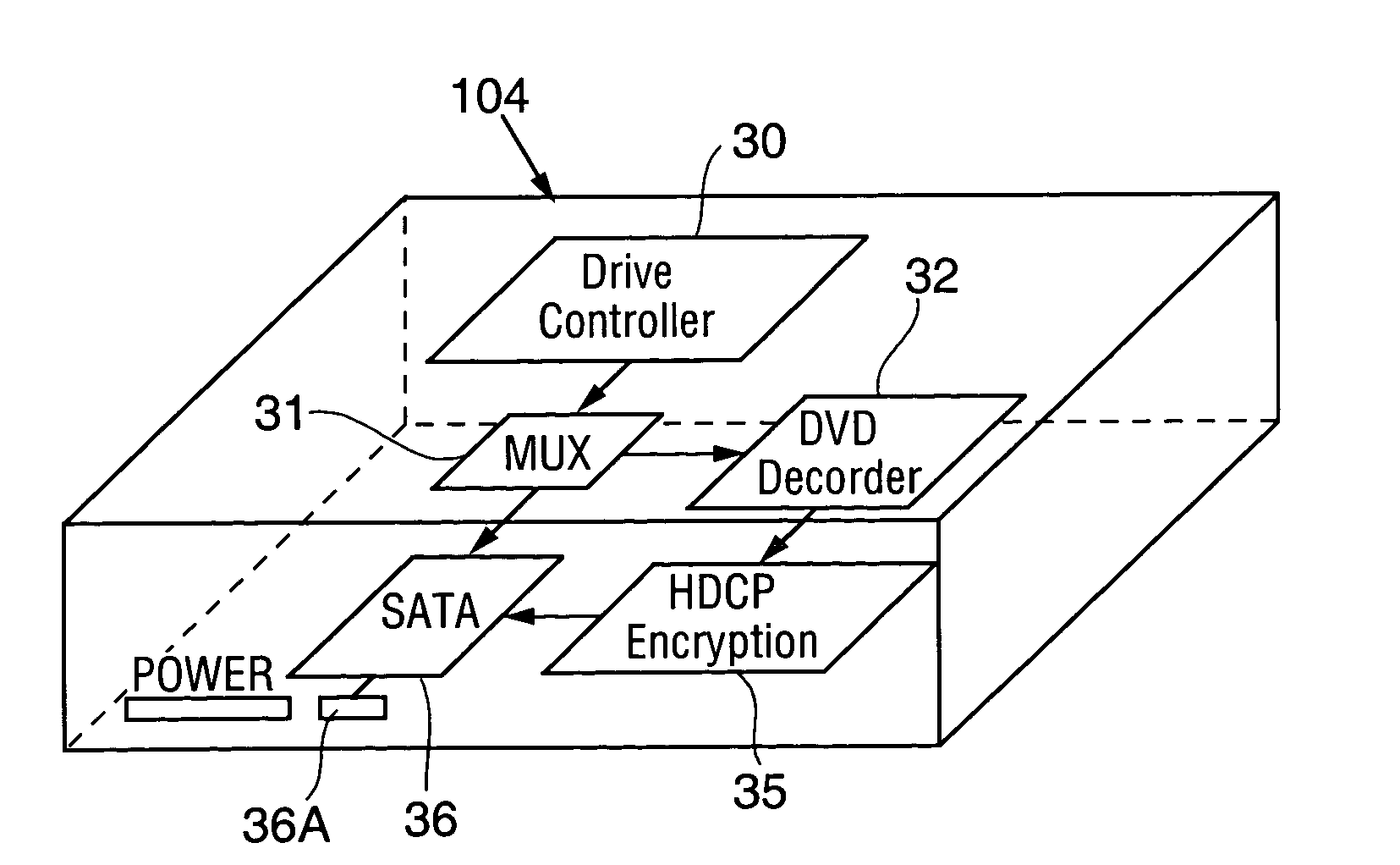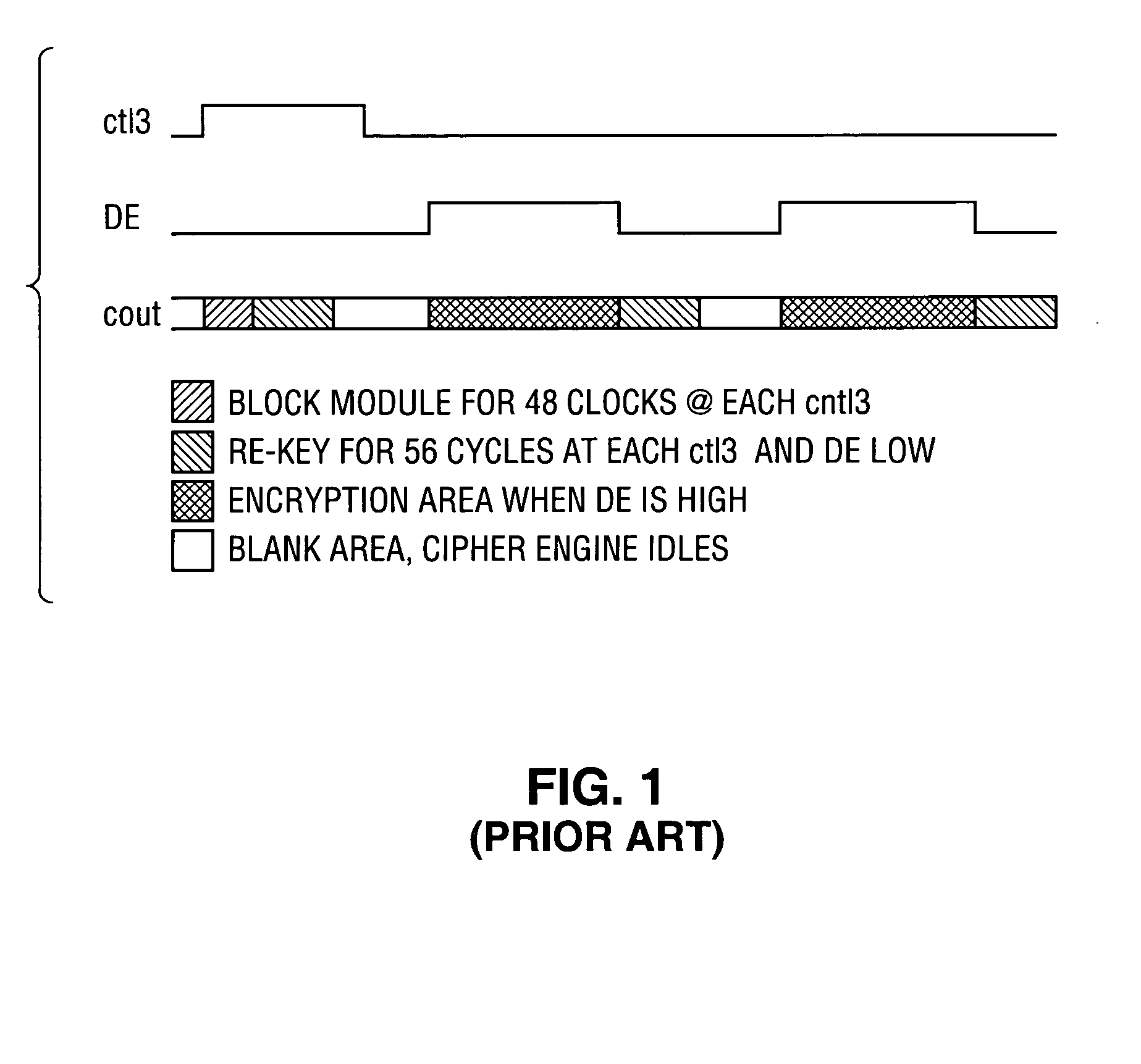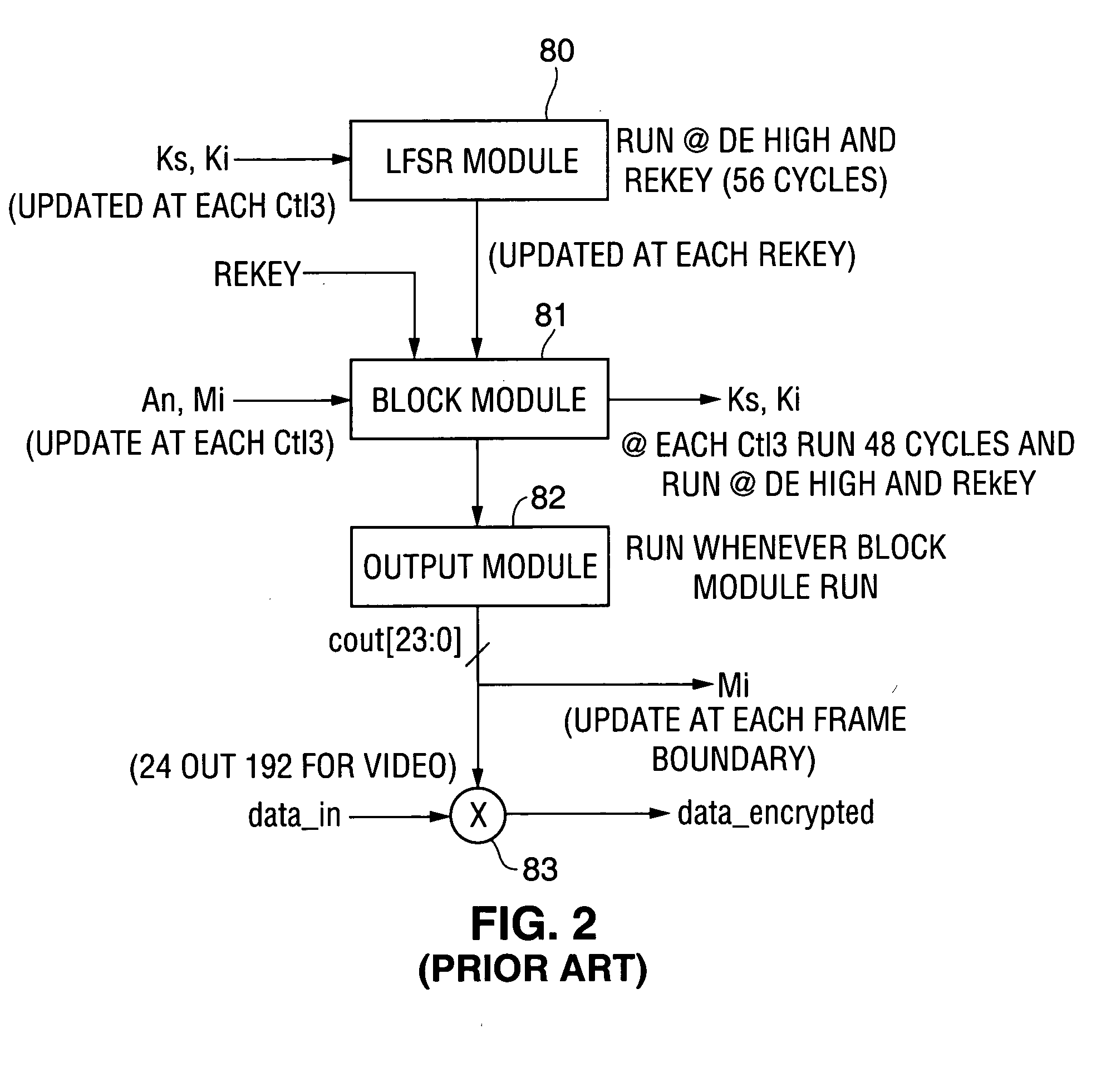Method and apparatus for content protection within an open architecture system
a content protection and open architecture technology, applied in the field of methods and apparatus for content protection within computing systems, can solve the problems of content that content cannot be effectively protected in a conventional open system, and the upstream protocol is fundamentally flawed
- Summary
- Abstract
- Description
- Claims
- Application Information
AI Technical Summary
Benefits of technology
Problems solved by technology
Method used
Image
Examples
Embodiment Construction
[0065]Modern Personal Computers (PCs) have evolved from strictly computing devices into communication and entertainment devices. As a result, users desire to view prerecorded video entertainment, including feature length movies, on their PC. In addition, the increased performance of processors makes it look advantageous to use the PC's processor to, for example, decode and play DVD movies.
[0066]However, the producers of content (e.g., entertainment content, such as movies) protected by (or as) intellectual property rightly are concerned about unauthorized use and copying of their property. If high quality copies of movies or other works can be made and distributed widely, e.g. via the internet, then the intellectual property quickly loses its value to the owner. In order to protect such content, the Content Scrambling System (CSS) was created to encrypt video content for DVDs. CSS is a cryptographic scrambling mechanism used on top of an MPEG compressed version of the original, raw ...
PUM
| Property | Measurement | Unit |
|---|---|---|
| feature length | aaaaa | aaaaa |
| threshold | aaaaa | aaaaa |
| transmission | aaaaa | aaaaa |
Abstract
Description
Claims
Application Information
 Login to View More
Login to View More - R&D
- Intellectual Property
- Life Sciences
- Materials
- Tech Scout
- Unparalleled Data Quality
- Higher Quality Content
- 60% Fewer Hallucinations
Browse by: Latest US Patents, China's latest patents, Technical Efficacy Thesaurus, Application Domain, Technology Topic, Popular Technical Reports.
© 2025 PatSnap. All rights reserved.Legal|Privacy policy|Modern Slavery Act Transparency Statement|Sitemap|About US| Contact US: help@patsnap.com



